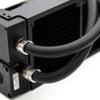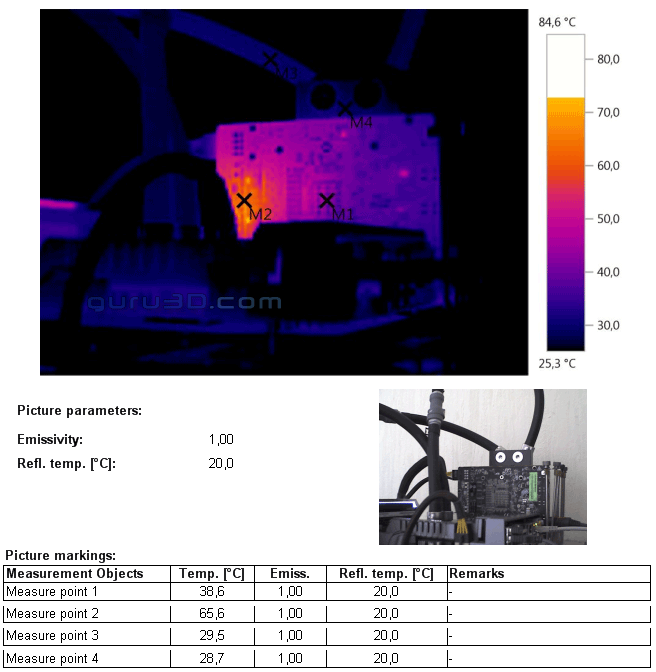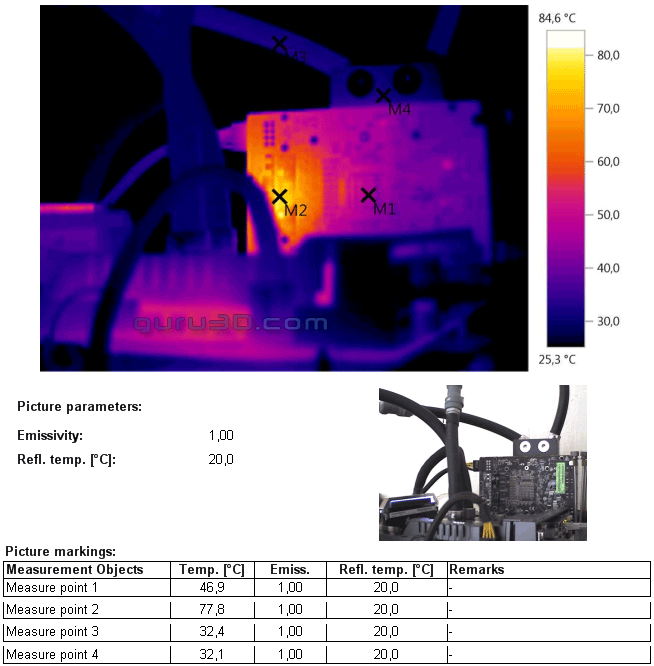FLIR Thermal images
Thermal Imaging Temperature Measurements
A new addition to our reviews will be the inclusion of Forward Looking Infra Red thermal images of hardware. Over the past years we have been trying to figure out what the best possible way is to measure temperatures on hardware. Multiple options are available but the best thing to do is to visualize heat coming from the product or component being tested. The downside of thermal imaging hardware is simple, FLIR camera's with a bit of decent resolution costs up-to 10,000 EUR. Hence we passed on it for a long time. With a thermal imaging camera a special lens focuses the infrared light emitted by all of the objects in view. This focused light is scanned by a phased array of infrared-detector elements. The detector elements create a very detailed temperature pattern called a thermogram. It only takes about one-thirtieth of a second for the detector array to obtain the temperature information to make the thermogram. This information is obtained from several thousand points in the field of view of the detector array. The thermogram created by the detector elements is translated into electric impulses. The impulses are sent to a signal-processing unit, a circuit board with a dedicated chip that translates the information from the elements into data for the display. The signal-processing unit sends the information to the display, where it appears as various colors depending on the intensity of the infrared emission. The combination of all the impulses from all of the elements creates the image. We can seek hotspots on the PCB indicating, for example, GPU but also VRM temperature as well as how heat is distributed throughout a product. We do hope you will enjoy this new technology as it did cost us an arm and a leg to be able to implement it.
First let me light up a regular stressed Radeon R9 Nano based on the reference cooler, see above the air-cooled card under stress. Thus that is the reference product with the reference air-cooler. That would be our "reference baseline. Now let's look at the thermal image below:
Here's the card at default clock frequencies. The processor is overclocked to 4600 MHz and runs default voltages (doesn't even light up in the thermal image). M1 is the GPU area showing roughly 38 Degrees C. The hotpot is the VRM area, that runs roughly 65 Degrees C. What a difference with the reference card eh? At M3 we see the tubing coolant exit temperature 30 Degrees C. That's a drop-dead gorgeous thermal image alright.
Heavily overclocked: the thermal image above is under overclocked conditions. The power limiter of the Nano is raised by 50% meaning we can allow the GPU to utilize way more power/wattage, the core clock is running 1070 MHz continuously. A very decent overclock for a product this size! For the processor we are using the hefty 1.35 Volts and run the 4790K at 4600 MHz. Clearly the card runs hotter, the GPU at M1 runs 47 degrees C however that's mostly residual PCH heat leakage coming from the VRM area. That is one of the disadvantages of such a small PCB.
You can see at M2 that the VRM area is getting hotter with this overclock and increase in power usage, we remain below 80 degrees though which is an absolutely normal temperature. At M3 we see the tubing coolant exit temperature 32 Degrees C.




